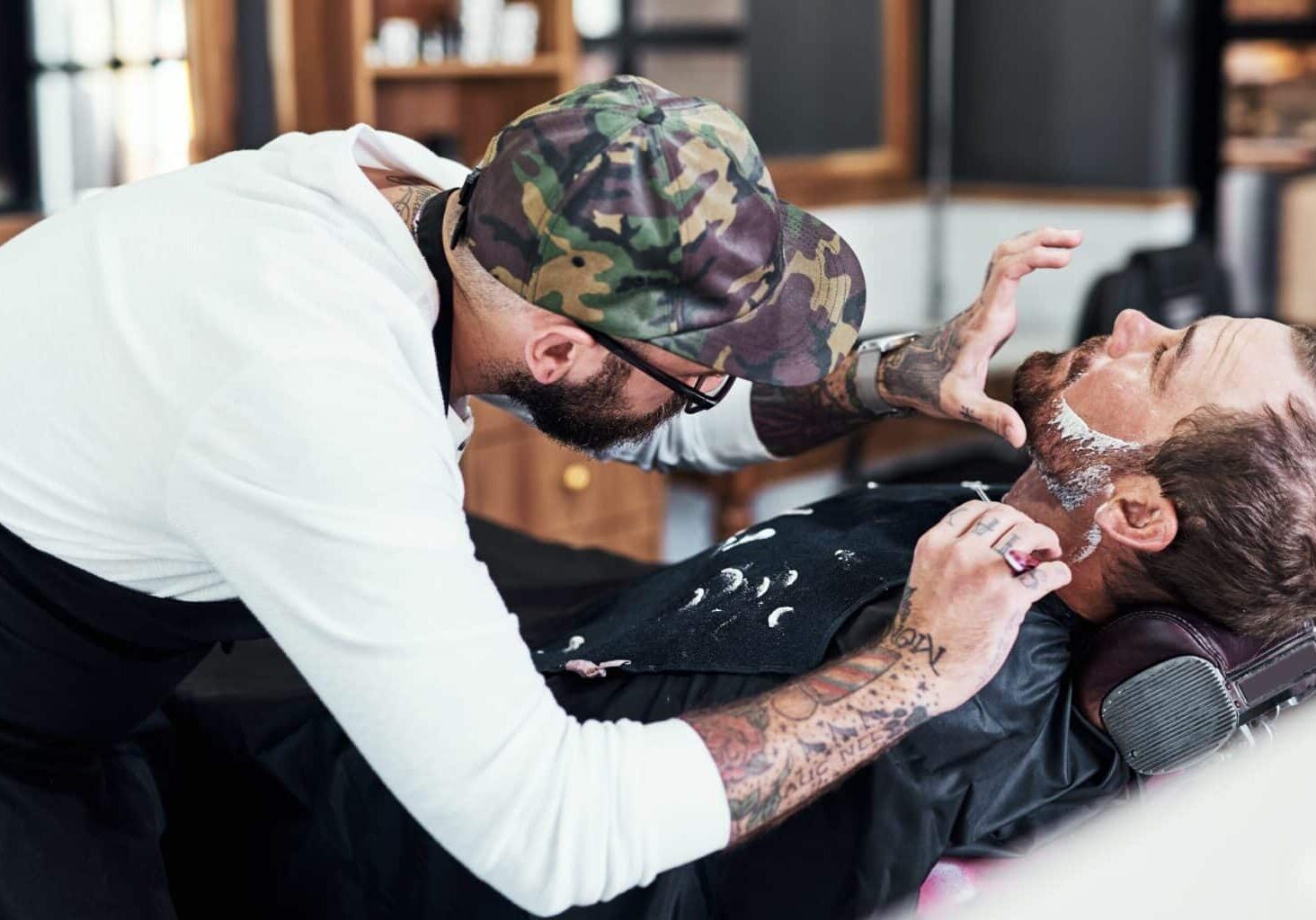Barber Shop Razor Cuts and Hair-Cutting Nicks
Last Updated: August 23, 2024

Nicks and cuts aren’t fun for you or your clients. For clients, a barber shop razor cut triggers anything from mild pain to genuine fear. Forums across the internet share scenarios like:
- My barber cut my ear. I didn’t see him disinfect his tools. Can I get HIV from barber scissors or HIV from a razor cut?
- I left the barbershop with small shaving cuts. The next day I caught a cold. Did I get the cold from the razor nicks?
- Can my son get an infection from shaving nicks? Should I report the stylist? Should I sue them?
Silly as they may seem, these scenarios instill true panic in anxious folks. To keep your barbershop clients calm, plan ahead with these four tips.
Let’s combat barber shop razor cuts and haircut nicks.
Preventing barbershop injuries doesn’t take “cutting-edge” technology. Here’s how to avoid and treat accidental nicks and cuts.
1. Maintain your instruments.
Accusations of dirty instruments or infections instigate costly lawsuits and negative publicity. Luckily, barber tools maintenance for safety has come a long way from the days when a barber shop razor cut could cause an untimely demise. If you’re wondering how to prevent nicks and cuts when shaving, start with your instruments.
Every barber should consistently clean, sharpen, oil, and inspect their tools to ensure high performance and quality. This provides several benefits:
- Sanitation. If a barber shop razor cut happens, clean tools are less likely to spread bacteria.
- Sharpness. Dull razors create unnecessary friction against the hair, rather than effectively cutting the hair. With sharper tools, you can apply less pressure and reduce your chances of accidental razor burns, nicks, and cuts.
- Fewer expenses. Maintenance extends your instruments’ useful lives so you’re replacing them less often.
- Early intervention. If a tool needs repairs or replacement, routine inspections allow you to catch mechanical problems early. For example, if you zero gap your blades, you’ll want to verify the blades are correctly aligned and the gaps are precise, ProStylingTools says. You don’t want the blade getting pushed over the guard blade before you can correct it.
- Compliance with cleanliness laws and regulations.
Ready to brush up on safely cleaning, labeling, and inspecting your instruments? Read our article on “Barber Tools and Equipment Maintenance.”
2. Prep the skin.
Shaving nicks and scrapes happen in part due to unsmooth surfaces. Therefore, preventing razor cuts in barbershops means giving the skin some pre-shave TLC.
Before anything else, prep the client’s face and neck with warm water, an exfoliating cleanser, pre-shave oil, and shaving cream, Philips and the Bearded Colonel suggest. This removes dead skin cells and softens the surface so the razor glides more smoothly. Hydrated skin is less likely to become irritated and flare into a barber skin rash, too.
You can also prevent barber shop razor cuts by handling the skin carefully during the shave. For example, gently push the client’s ears forward while you trim. Additionally, hold the skin taut or ask clients to blow out their cheeks to create a level surface, Philips recommends.
Lastly, keep an eye out for existing cuts, scars, blemishes, or moles. These may require extra care or avoiding altogether, like with raised moles.
3. Stay calm and steady.
One of the most common causes of shaving cuts and nicks is sudden movements, says Free London Barbers in their blog.
When learning how to prevent cuts and razor nicks, pay attention to your clients’ fidgeting. They may need a gentle reminder to sit still or spit out their gum.
Meanwhile, focus on keeping yourself steady and calm, too. The calmer you are, the more controlled your hands will be and the less likely you’ll be to rush. And if you do cause a barber shop razor cut or haircut nick, not overreacting will help your client stay calm, as well.
4. Plan and practice first aid.
Ever wondered what to do if a barber cuts a client? Or how to stop a shaving cut from bleeding?
What do barbers put on cuts? What happens if shaving cuts won’t stop bleeding?
Whether you work solo or have a team of barbers, first aid training is crucial for client safety in barber shops. It teaches you how to treat razor cuts. Your confidence, in turn, will help comfort anxious clients.
Every barbershop booth should have a designated first aid kit. Practice responding to barber shop razor cuts, treating shaving nicks, and disinfecting or disposing of anything blood contaminated. TikTok creator Thomas White (@thomascutit) offers a helpful step-by-step tutorial.
Does your risk management make the cut?
Clients get anxious about barber shop razor cuts all the time. But accidental nicks and cuts aren’t the only common barbershop lawsuits to prepare for.
Slips and falls. Overprocessed hair. Burns. Viruses and infections. Don’t let these accidents catch you off guard.
Instead, get proactive against expensive and stressful lawsuits with WellnessPro. Our liability insurance for barbers could include coverage for nicks and cuts. To apply for barbers and hairstylists coverage, fill out our online application here.
